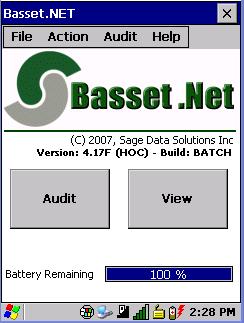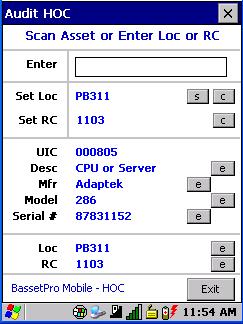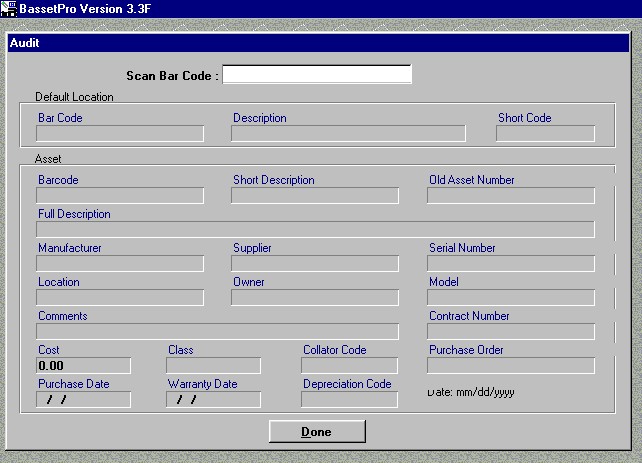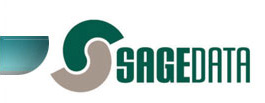Five key elements
In this section we are talking about specific technologies: bar codes and RFID, for identification of items, locations or individuals; and hand held mobile computers, used to direct activities or collect information.
In any project to introduce or update information systems using these technologies, there are five key elements which determine success of the project.
The five elements are:
-
system design,
-
software,
- hardware,
- labels or tags, and
- ongoing support.
This page talks about the second item, the software.
What, exactly, do we mean by software?
The systems that we provide cover a wide range of functionality. The most basic systems are completely self contained, and run on a single hand held computer, with no support required other than a convenient printer for producing reports.

At the other end of the spectrum, our more sophisticated systems include several different elements. There is usually a desktop application. There are mobile elements, running on hand held computers, which may be operating in batch mode, or connected by local or wide area wireless network.
A web components is becoming more of a standard feature, either as a means of viewing information or requesting services, or as a fully interactive element of the system. And many of these systems exchange information with one or more "back end" systems.
So by software, we mean all of the above.
So what makes this software so special?
There are several key issues which differentiate this software from conventional desktop software.
The special difficulties of this environment include...
- using tiny screens and keyboards on the mobile units
- protecting your data on batch mode devices
- mobile processors running at slower speeds
- managing multiple instances of a common database
- RFID interfaces require special management in mobile applications
- using bar code readers and RF links with web applications
Why are SageData so good at producing software that complies with all the above constraints? Because we have been at if for a long time.
 We produced our first hand held computer software in 1991, for a data collection project. We have made a lot of mistakes since then, but we don't make the same mistake twice. So our software is well tested, well proven, robust. Over 50 person years (yes, half a century) of development activity have gone into these products, not counting countless hours of contribution from some 900 clients. (not that all the "contributions" were fully appreciated at the time.)
We produced our first hand held computer software in 1991, for a data collection project. We have made a lot of mistakes since then, but we don't make the same mistake twice. So our software is well tested, well proven, robust. Over 50 person years (yes, half a century) of development activity have gone into these products, not counting countless hours of contribution from some 900 clients. (not that all the "contributions" were fully appreciated at the time.)
And by working closely with the hardware manufacturers, we have learned to push the envelope - found ways to extend the function of these machines beyond that advertised in the technical literature.
And what can this software do?
Our software is all built around the two key technologies - auto ID (bar code or RFID) and mobile computing (batch or RF). This usually translates into "people, place and things". We cover a wide variety of applications, but they are all based around identifying items, knowing a physical location, and knowing who is interacting with the item.
Specific applications include..
- asset management,
- routine inspections,
- managing tool cribs, small stores or warehouses,
- directing messengers,
- tracking maintenance activities,
- and collecting data (soil samples, or counting caribou)
- manufacturing controls (including QA)
- handling fresh produce
What about specific packages?
We have a variety of standard packages that have been developed over the years. This includes...
- BassetPro - for asset management and small stores applications
- Whippet - for larger warehouse management applications
- FiESTA - Fire Equipment Status Tracking Application - for managing inspections of fire extinguishers and other fire fighting equipment
- PICS - Paperless Inventory Control System, for smaller stores, such as departmental stationery stores
- SePTRE Security Patrol Tracking Equipment.
Can these be customised to my specific application?
Absolutely. But we do this a little differently.
 The classic software trade off is between custom and standard solutions.The custom solution is good, because it gives you a system that does exactly what you want. But unfortunately custom applications take time to develop, are expensive, may not give you exactly what you want. And worst of all, you are part of the testing and debugging process.
The classic software trade off is between custom and standard solutions.The custom solution is good, because it gives you a system that does exactly what you want. But unfortunately custom applications take time to develop, are expensive, may not give you exactly what you want. And worst of all, you are part of the testing and debugging process.
Standard systems avoid these problems. They are less expensive, can be delivered quickly, and are usually robust and well proven. But unfortunately they don't do exactly what you want. You may have to change your process to match the operating procedures laid down by the software.
We have steered a path between these two extremes.
We believe that the perfect tool is one that does everything that you need. And absolutely nothing else.
 All installations start with a standard package. These packages are designed so that we can easily configure them by removing (actually hiding) functionality that is not required. The result is a package that is closely configured to our clients exact requirements. But it can be delivered quickly. It is not expensive. And it is robust - as the changes only affect the presentation layer - the user interface.
All installations start with a standard package. These packages are designed so that we can easily configure them by removing (actually hiding) functionality that is not required. The result is a package that is closely configured to our clients exact requirements. But it can be delivered quickly. It is not expensive. And it is robust - as the changes only affect the presentation layer - the user interface.
Our aim is to give you a boring system. You turn it on, it works. No fuss. No excitement.
Providing you with robust, well proven software is a key part of achieving that aim.
Our intention is to leave you to focus on your key areas of expertise, your core competencies. Our job is to look after the bar code system, so that you don't have to.
For further information contact Tom Vernon or Doreen Wallace, or send an e-mail to
info@SageData.com.
We look forward to hearing from you.

